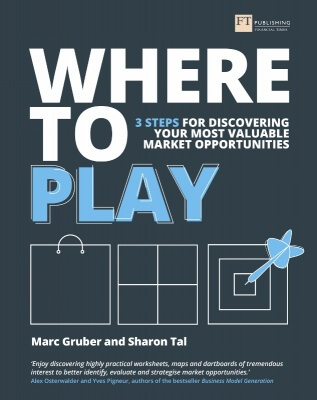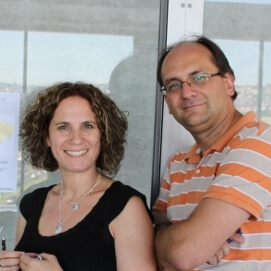In uncertain times, it's important for growing businesses to set targets and be flexible in meeting them.
Agile Focus Strategy: How To Balance Focus and Flexibility
In uncertain times, it's important for growing businesses to set targets and be flexible in meeting them.

Startups must focus sharply or else they won’t be able to survive. And the reason for this advice is clear: small ventures are scarce on resources and, thus, they must not spread their efforts too thinly.
In fact, one of the most common advice for entrepreneurs is to adopt a ‘laser-sharp’ focus approach, by pursuing on a single narrow market opportunity, to make the most out of their limited resources.
Yet… focus comes at the expense of flexibility! So, while this common advice makes perfect sense, it neglects the importance of agility, which is especially critical for companies operating under conditions of uncertainty- as startups often do.
In fact, startups must stay flexible and agile to be able to adapt quickly, because unforeseeable things may happen along the way. This is what innovation is all about: when you choose the market opportunity that you will focus on, you better just accept that change is a likely outcome down the road– and get ready for it!
Indeed, an in-depth study of tech startup companies showed that 72% change their market focus within the first three years. A result of the study shows that a laser focus strategy may lock startups into a narrow, single market option, and actually hinder their success.
The conclusion is clear: to be able to pivot more easily down the road, you need to make sure that you remain flexible as you focus on pursuing your chosen market opportunity… you need to balance focus and flexibility!
To succeed in this crucial task, you need to set an Agile Focus Strategy for your startup.
At first, Agile Focus seems like an oxymoron, but a deeper observation reveals not only that this is possible, but also that it can be extremely beneficial, if done right.
So, what does Agile Focus mean? It means balancing the delicate trade-off between focus and flexibility to avoid locking-in when acting in an uncertain environment.
The Agile Focus Strategy balances the tension between focus and flexibility by consciously keeping open other market opportunities: those that will allow you to mitigate your risk and to increase your value with relatively low effort.
Hence, this strategy enables you to leverage your scarce resources and capabilities, so that you allocate them more effectively and avoid a potentially fatal lock-in.
Here is how you can design your Agile Focus Strategy, in 3 clear steps:
1. Identify additional market opportunities that could be suitable as your backup or growth options. A backup option is one that you will want to pursue if you are not successful with your current opportunity. A growth option is a market opportunity that you will want to pursue once you are successful with your current opportunity.
2. Evaluate the relatedness of these possible options to the market opportunity that you are focusing on. Relatedness means that developing and delivering the product- for both markets- require relatively similar resources and capabilities. The more related an option is, the more you can leverage your existing competencies to succeed in it. And this is exactly what we want.
3. Pick at least one backup and one growth option to keep open. Keeping an option open means that you invest very little resources and management attention in it, just to make sure not to lock yourself out of it. So, when you develop your venture's unique abilities, resources and networks, you keep these options in mind. This is exactly what will keep you flexible and nimble over time.
By acknowledging and keeping in mind these future options, you develop your resources and capabilities in a more general manner. For instance, by creating a more modularized technology that can be reconfigured more easily, by casting a wider Intellectual Property (IP) net, or by picking a brand name that would lend itself for redirection.
These relatively low investments will make your firm more robust to change, without compromising the pursuit of your most promising opportunity. In other words, it will help you to nurture your agility, without losing the focus that is required to push forward on your most attractive path!
Being able to focus while remaining agile, especially for start-ups, is crucial If you are not open to alternative paths while concentrating your limited available resources, and can’t handle change or adaptation efficiently, you may simply lose the race…
Article written by Dr Sharon Tal and Prof Marc Gruber co-authors of Where to Play, 3 steps for discovering your most valuable market opportunities, published by FT publishing, out now on Amazon, priced £16.99.
For more information go to www.wheretoplay.co
Thanks for signing up to Minutehack alerts.
Brilliant editorials heading your way soon.
Okay, Thanks!



